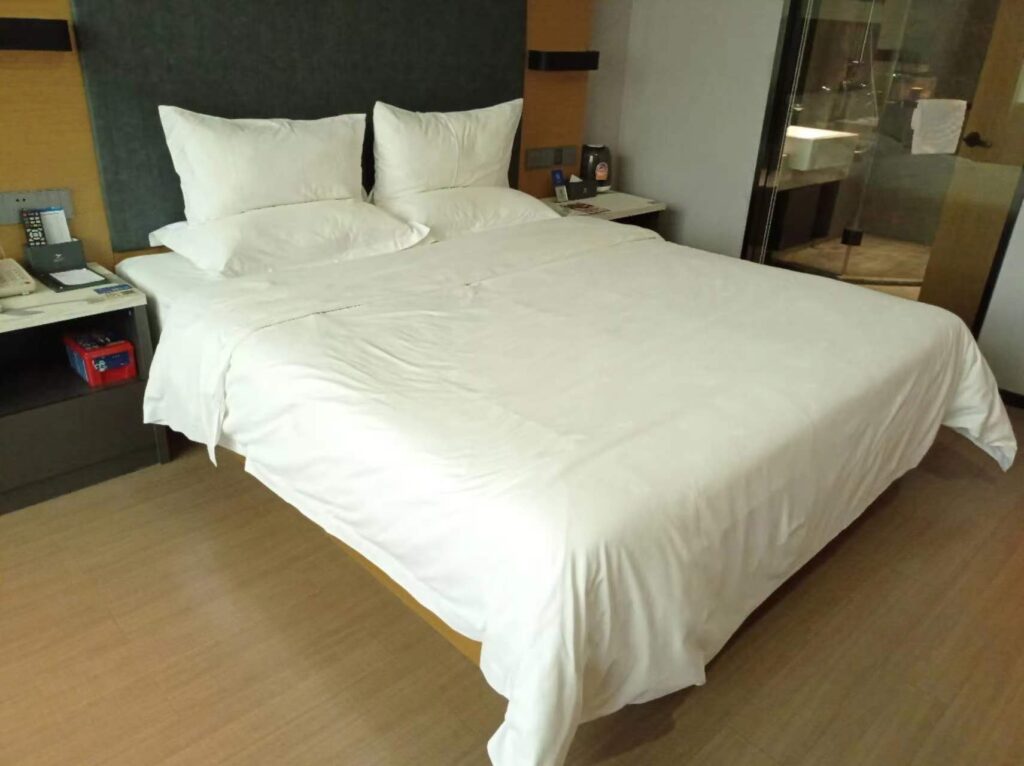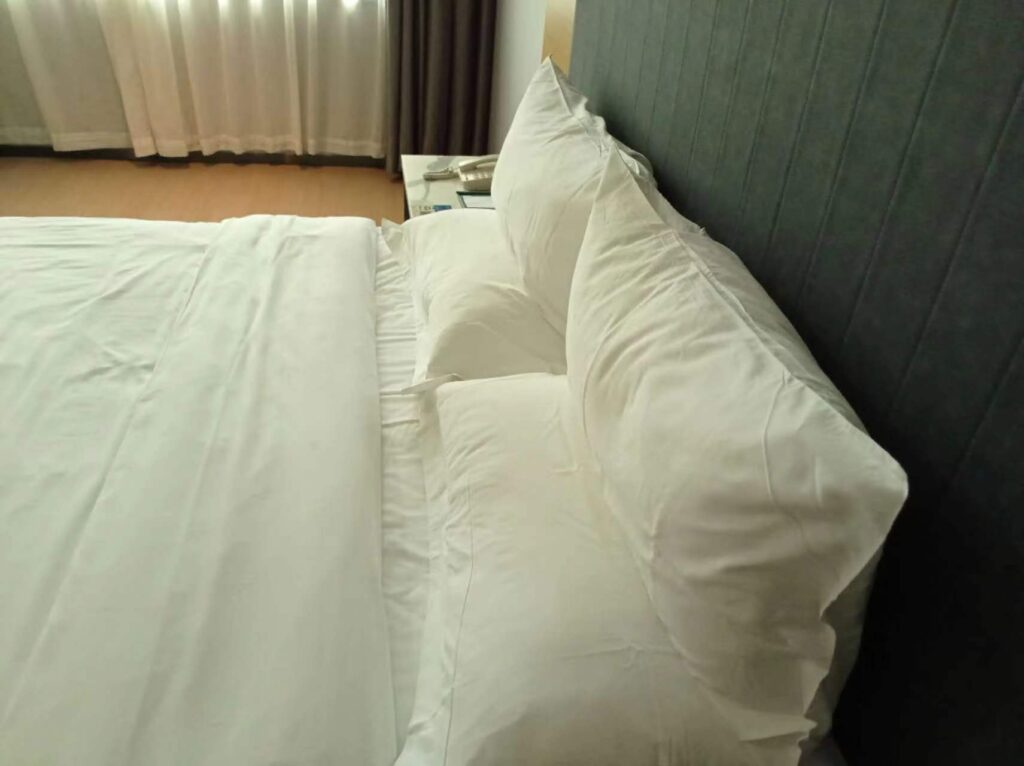Hotel linen has unique advantages in creating an atmosphere, optimizing the environment, and providing personalized services, making its procurement a crucial strategic aspect in hotel operations. Pursuing cheap options or stubbornly choosing high-end materials is not the ultimate solution. The key lies in selecting suitable hotel linen to bring good benefits to the hotel and provide guests with a superior experience.
However, many customers have misconceptions about fabrics. Today, Ulencn.com will lead everyone to explore the “secrets” of hotel linen, allowing customers to make better choices and avoid pitfalls.
Misconception 1: Thicker fabrics are better and more expensive.
Thicker fabrics are not necessarily better. For example, a 40×40 fabric is thicker than a 60×40 fabric, and a 60×40 fabric is thicker than a 60×60 fabric. Thickness does not always guarantee comfort. Fabric thickness is closely related to the fineness of the yarn, specifically measured by its yarn count (also known as “S”).
The higher the yarn count, the finer the yarn, resulting in more yarn per square inch, making the fabric softer, stronger, and relatively thinner, leading to higher fabric quality.
Misconception 2: Stiff fabrics are better.
Hotel bedspreads, bed sheets, pillowcases, and pillow towels are all processed with sizing after being washed by a formal laundry company. Sizing serves to increase the fabric’s stain resistance, preventing dirt from penetrating into the fibers and creating a “barrier” between dirt and the fabric, making it easier to remove stains during washing.
Sizing also aims to increase the fabric’s stiffness, preventing fiber shedding and enhancing its aesthetics. However, the increased thickness and stiffness through sizing are temporary, and they disappear after washing.
Misconception 3: Shiny fabrics are made of synthetic fibers.
The term “silk finish” refers to the process where cotton fabrics are treated with strong alkali, melting the fuzzy surface of the fabric and causing the fibers inside the yarn to contract. After that, the alkali is washed off. This treatment changes the shape of the cotton fibers, making the reflection of light more regular and giving the cotton fabric a glossy appearance. Silk finish is a process unrelated to the fabric material.
Factories that lack silk finishing equipment use a process called “calendering.” Calendering is a wet-heat process that flattens the fabric surface and removes fiber fuzz, enhancing the fabric’s shine. However, the gloss effect of calendering is not durable and fades gradually after a few washes.
Good fabric quality depends on yarn count and density. High yarn count and density indicate better quality. It also depends on finishing processes such as singeing and silk finish, which enhance the fabric’s properties but also increase the price. The most important point is to choose a manufacturer with guaranteed quality and after-sales service, ensuring that your money is well spent.